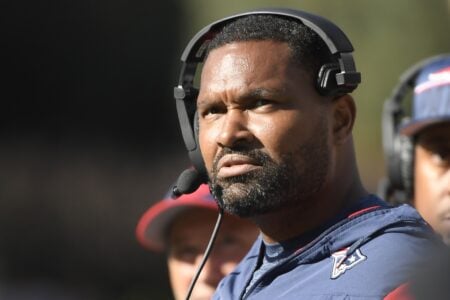PatriotSeven
In the Starting Line-Up
- Joined
- Dec 23, 2011
- Messages
- 2,906
- Reaction score
- 182
Is it just me or does it seem as if recently we are seeing more and more high NFL passer ratings over 100+, perfect passer ratings and great passing statistics in general?
I didn't actually put it all together on a statistical spreadsheet, but just a quick scan on ESPN.com's passing stats page reveals that over the past 10 years we have had a pretty noticeable increase in NFL passer rating stats as a whole.
It's not so much the fact that we are getting 5-6 QB's a year with passer ratings over 100 for the season, rookies included, but more evident is the the increase in amount of quarterbacks that are over the 80.0 mark in the NFL.
Nick Foles is currently listed with a 80.3 average, but he is the 25th worse rating in the league. Last year it was Andy Dalton at 20th. By comparison in seasons prior to 2007, the numbers were noticeable lower. David Garrard was listed as 16th in the league with an 80.5 in 2006, Chris Simms at 19th in 2005, and Byron Leftwich at 18th in 2004. In 2003 it was Jeff Garcia at 15th.
It always fluctuated a bit year to year but as a whole it appears that there's at least about 5 QB's today that are passing over 80.0 more than in the early 2000's. Likewise we are regularly getting multiple QB's with passer ratings over 100.
Are we really getting better passers or is this simply a direct result of the rules changes that benefit the passing game which makes it easier to score higher?
I didn't actually put it all together on a statistical spreadsheet, but just a quick scan on ESPN.com's passing stats page reveals that over the past 10 years we have had a pretty noticeable increase in NFL passer rating stats as a whole.
It's not so much the fact that we are getting 5-6 QB's a year with passer ratings over 100 for the season, rookies included, but more evident is the the increase in amount of quarterbacks that are over the 80.0 mark in the NFL.
Nick Foles is currently listed with a 80.3 average, but he is the 25th worse rating in the league. Last year it was Andy Dalton at 20th. By comparison in seasons prior to 2007, the numbers were noticeable lower. David Garrard was listed as 16th in the league with an 80.5 in 2006, Chris Simms at 19th in 2005, and Byron Leftwich at 18th in 2004. In 2003 it was Jeff Garcia at 15th.
It always fluctuated a bit year to year but as a whole it appears that there's at least about 5 QB's today that are passing over 80.0 more than in the early 2000's. Likewise we are regularly getting multiple QB's with passer ratings over 100.
Are we really getting better passers or is this simply a direct result of the rules changes that benefit the passing game which makes it easier to score higher?


















